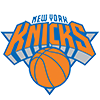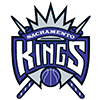This is part two of the free agency fantasy fallout analysis. We'll get to Jimmy Graham, Michael Crabtree, Jordy Nelson, Case Keenum, and Paul Richardson.
Check the first edition here here to read about Kirk Cousins, Sammy Watkins, Allen Robinson, Dion Lewis, Jerick McKinnon, Carlos Hyde, and Tyrod Taylor. There will be a third version of this article, probably Monday or Tuesday, to address various remainders from this free agency class.
Jimmy Graham to Green Bay
I was among those who doubted Jimmy Graham prior to his triumphant return from a torn patellar tendon – something that was rather unprecedented at the time – so it's odd to find myself now a big fan of this signing for Green Bay two years later. It may be a big contract – $30 million over three years – but I guess I'm less concerned with Green Bay's salary cap health than I am with exploiting the opportunity Graham might present in fantasy football. For people like us, that contract is reassurance – the amount of money all but dictates prominent usage for Graham in an Aaron Rodgers offense. That's an excellent starting point, because that role would likely make Graham useful in fantasy football even if he's not particularly effective in real-life terms.
But we can't rule out Graham as a candidate to provide substantial real world value, either. For as unsightly as his 5.4 YPT was last year
This is part two of the free agency fantasy fallout analysis. We'll get to Jimmy Graham, Michael Crabtree, Jordy Nelson, Case Keenum, and Paul Richardson.
Check the first edition here here to read about Kirk Cousins, Sammy Watkins, Allen Robinson, Dion Lewis, Jerick McKinnon, Carlos Hyde, and Tyrod Taylor. There will be a third version of this article, probably Monday or Tuesday, to address various remainders from this free agency class.
Jimmy Graham to Green Bay
I was among those who doubted Jimmy Graham prior to his triumphant return from a torn patellar tendon – something that was rather unprecedented at the time – so it's odd to find myself now a big fan of this signing for Green Bay two years later. It may be a big contract – $30 million over three years – but I guess I'm less concerned with Green Bay's salary cap health than I am with exploiting the opportunity Graham might present in fantasy football. For people like us, that contract is reassurance – the amount of money all but dictates prominent usage for Graham in an Aaron Rodgers offense. That's an excellent starting point, because that role would likely make Graham useful in fantasy football even if he's not particularly effective in real-life terms.
But we can't rule out Graham as a candidate to provide substantial real world value, either. For as unsightly as his 5.4 YPT was last year – and that is atrocious, no doubt – the fact that he maintained his red-zone presence with 10 touchdowns is illustrative of his new floor. Which is to say, when one of his bad-case scenarios entails one of the league's highest touchdown totals, there's reason to suspect big upside if a few more things go right for him this year.
Whether you think those things turn for the better is probably subject to whether you think Graham's concerning numbers last year were due to physical decline, or if they were instead due to playing through a combination of knee and ankle injuries all year. Given that Graham posted a YPT of 9.7 in 2016, I'm inclined to blame the inefficiency on those injuries. If you think Graham has better injury luck in 2018, I think a conservative projection for him would be at least 700 yards and 10 touchdowns. While Graham is highly unlikely to see 14 targets within the five-yard line two years in a row, Green Bay's lack of height at receiver almost certainly makes Graham the go-to red-zone option for Rodgers. Assuming his hype and price don't get out of control, I'll likely be buying.
Michael Crabtree to Baltimore
Oakland wanted to move on from Crabtree, cutting him to clear way for Jordy Nelson following Nelson's release from Green Bay. The primary red-zone target for Oakland the last three years, Crabtree provided a steady if contained presence, scoring 25 times in that span but always averaging fewer than seven yards per target in a given season, including a low point of 6.1 YPT last year. I'm skeptical enough of Derek Carr to take some of the blame away from Crabtree for those YPTs, but he's a basically a short-space receiver at this point.
With that said, that would seem to make him a rather fine fit with Joe Flacco's dink-and-dunk game, problematic as the quarterback play might otherwise be. Flacco isn't good at anything, but his dependence on short passes means that Crabtree should see a big target volume, especially in a Marty Morniwheg offense that's been among the most uptempo and pass-happy in the league. Even if he only sees a YPT of 6.0, the possibility of approaching the 160-target mark means Crabtree should provide a high floor and steady presence in standard scoring, and perhaps a big-time value in PPR formats.
Jordy Nelson to Oakland
Nelson replaces Crabtree in Oakland, not just in a chronological sense but likely as far as role goes, too. Crabtree played the underneath and red-zone role for Oakland, and at 6-foot-3 Nelson is the better red-zone target between himself and Amari Cooper, yet Nelson's declining big-play ability otherwise plugs him into underneath functions by default.
Nelson's YPT of 5.5 last year is bad – non-viable in fact – but playing through injuries and dealing with Brett Hundley for a long stretch mostly rationalizes that low figure. The problem is that, if Crabtree averaged just 6.1 YPT with Derek Carr, it might be fair to worry that Nelson can't do much better himself with age 33 coming up in May. Perhaps Jon Gruden will prove himself a wizard upon his return to the league and unleash an improved Oakland offense in the process, but I'm probably too low on both Gruden and Carr to expect that, personally.
On the other hand, Carr is likely to bounce back a bit from his own 2017 struggles, from variance if nothing else. If so, Nelson ought to be able to provide some floor, especially in PPR leagues, even if the upside is capped. And I think you do have to consider that upside mostly vacant.
Paul Richardson to Washington
I'm lower on Richardson than most people. He was a trendy free agent name in this class due to his standout draft pedigree among the under-the-radar free agent receivers, but I have to question any metrics that single him out as more than maybe a top-75 wideout in the NFL.
The good news on Richardson is that he's fast – 4.40-second 40-yard dash fast – and he outplayed Tyler Lockett last year while averaging 8.8 YPT as he accumulated 703 yards and six touchdowns. Also, he won't turn 26 until April. Furthermore, he should have a prominent role in a Washington offense that's likely to subtract Terrelle Pryor and Ryan Grant from last year's rotation.
On the other hand, no one is convincing me that Richardson would have ever played ahead of Lockett if it weren't for the brutal compound leg fracture Lockett suffered toward the end of the 2016 season. Lockett was the better player before that injury and it was never remotely close. I'm also skeptical that Richardson's speed is as practically utilized as his proponents might assume. Richardson ran his 4.40 40 at 175 pounds. That is perilously thin – going back to 2000, only three receivers at a listed weight of 175 or less surpassed 1,000 yards in a season. Harry Douglas and Steve Breaston each did it once, and Marvin Harrison did it seven times. Richardson sure as hell isn't Harrison, and the other two faded into obscurity after their very brief reigns.
Think about it: 4.40 speed is great, but at 175 is it practically more useful than 4.50 speed at 190 pounds? Probably not, and no one cares when a 190-pound receiver runs a 4.50. Richardson's speed is at the expense of his frame, which makes him a poor jumpball target and a liability over the middle. I think he can make plays for you on the sideline, but I don't think he can make that many plays downfield. He doesn't have the Tyreek Hill speed to just outrun someone out of his stance, and he doesn't have the frame to box out when he fails to separate. If you watch his Seattle tape, most of his big plays were the result of improvising with Russell Wilson after broken plays – not because he beat the coverage.
Case Keenum to Denver
Keenum enjoyed a fine season in Minnesota, where he came off the bench to lead the Vikings to the NFC Championship Game by throwing for 3,547 yards (7.4 YPA), 22 touchdowns, and seven interceptions in the regular season, completing 67.6 percent of his passes while he was at it. Relying on a combination of standout downfield accuracy, wily improvisation, and a generally gutsy demeanor, Keenum made a routine out of overachieving last year.
Some players are rare outliers capable of indefinite overachievement compared to the sum of their parts, and perhaps Keenum is one of those players. But most overachievers eventually fall back to earth, and the landing could be more painful on a sinking Denver squad than it might have been in Minnesota, where Keenum was positioned to succeed by the playmaking of Adam Thielen/Stefon Diggs and the playcalling of Pat Shurmur. A profound lack of throwing velocity means Keenum always needs specific passing play structures to stay out of danger, and he needs to constantly outplay the quarterback field as far as anticipation and accuracy go to keep defenders from closing on his fluttering passes. In Minnesota, that specifically manifested in a sort of playaction dependence, where the run fake often bought Thielen and Diggs enough downfield separation for Keenum to let his superb accuracy take care of the rest, with the corner or/and safety's closing speed negated by the distance bought by the fake.
Both Demaryius Thomas and Emmanuel Sanders are staring at the possibility of physical decline, which is bad timing given that Keenum might have seen the difficulty level go up merely from the fact that there is more film on him than ever before. While I think Keenum is too skilled to fall off completely, I am concerned that his likely regression to the mean would occur in a less favorable setting. Plus, the Broncos are likely to pursue a quarterback with their first pick in the draft, and in that Case Keenum would be dealing with a short leash should he deal with a stretch of bad luck with his new team. I probably won't own any shares outside of best ball and two-QB/superflex leagues, and likely out of desperation rather than pursuit.






















